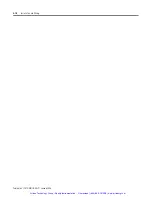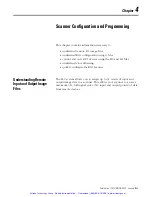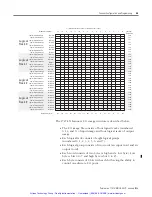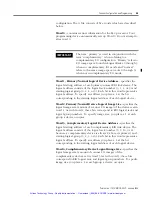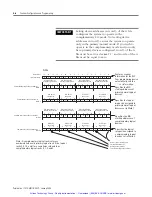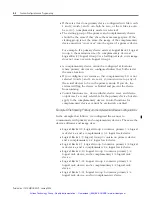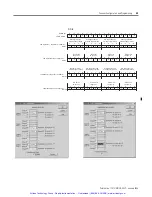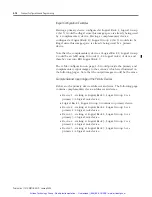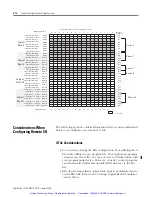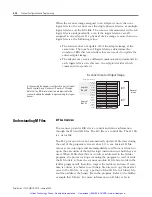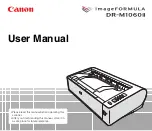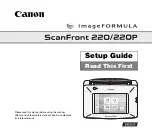
Publication 1747-UM013B-EN-P - January 2005
4-8
Scanner Configuration and Programming
•
If there is at least one primary device configured in G file words
1 and 2, words 3 and 4 can both be zero, or the G file size can
be set to 3 (complementary mode not selected).
•
The starting group of the primary and complementary chassis
should be the same if they share the same image space. If the
starting group is not the same, the image of the complementary
device must not “cross over” into the space of a primary device.
For example, if a primary device exists at Logical Rack 1 Logical
Group 4, the maximum size of a complementary device at
Logical Rack 9 Logical Group 0 is a half logical rack, so its image
does not cross over into Logical Group 4.
•
A complementary device cannot be configured at locations
where primary devices are configured unless they both start at
the same location.
•
If you configure your system so that complementary I/O is not
selected (words 3 and 4 are zero), you must
not
set up any of
the actual devices to be in the primary mode. If you do, the
system will flag the device as faulted and prevent the device
from running.
•
Control functions (i.e., device inhibit, device reset, and device
output reset) are only selectable for the primary device, but also
apply to the complementary device. Control functions for
complementary devices cannot be exclusively enabled.
Example G File Showing Primary and Complementary Device Configurations
In the example that follows, we configured the scanner to
communicate with primary and complementary devices. These are the
device addresses and image sizes:
•
Logical Racks 0/8, Logical Group 2 contain a primary 3/4 logical
rack device, and a complementary 3/4 logical rack device.
•
Logical Racks 1/9, Logical Group 0 contain no primary device,
and a complementary 1/2 logical rack device.
•
Logical Racks 1/9, Logical Group 6 contain a primary 1/4 logical
rack device, and a complementary 1/4 logical rack device.
•
Logical Racks 2/10, Logical Group 0 contain a primary 3/4
logical rack device, and a complementary 1/4 logical rack
device.
•
Logical Racks 3/11, Logical Group 2 contain a primary 1/4
logical rack device, and a complementary 1/2 logical rack
device.
•
Logical Racks 3/11, Logical Group 6 contain a primary 1/4
logical rack device, and no complementary device.
Artisan Technology Group - Quality Instrumentation ... Guaranteed | (888) 88-SOURCE | www.artisantg.com







